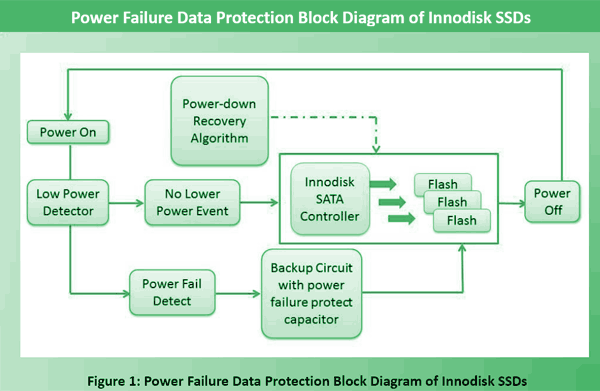SSD, flash storage and DRAM designer and manufacturer Innodisk has patented a new technology which will help secure data integrity on an SSD during a power failure. The new data preservation system is called Power Secure Technology and it “significantly reduces the probability of data loss or corruption,” on systems affected by a sudden shutdown, says Innodisk.

Innodisk’s new technology is an “advanced hardware and firmware-based power failure protection system”. The storage tech company says that while SSDs are physically robust compared to HDDs they are similarly vulnerable to “abnormal power failure”. Innodisk explains “If a SSD read or write operation is interrupted due to an unexpected loss of power, there can be inconsistencies in the data; it may not load successfully, and an ECC (Error Correcting Code) failure can occur, leading to data loss.”
Low power detector
Power Secure Technology kicks in if Innodisk’s low power detector is triggered. Following this event “a safe power-down recovery algorithm is executed to help prevent data loss and ensure data integrity. The controller will complete the current operation, using residual power stored in capacitors on the SSD, and then continue monitoring external power conditions to prevent further access to the flash memory while voltage levels are abnormal. If the power abnormality is brief, Power Secure can allow normal operations to continue, however, even if the power fails completely, Power Secure will be ready to take further action to protect data when power is restored.”

When power is restored the Power Secure Technology scans and recovers data then restores your drive to a readable state. Innodisk explains that Power Secure functionality is integrated into the storage device so doesn’t need any user intervention to do its job. Innodisk has made a white paper available (PDF) which thoroughly explains its technology.
Innodisk products are aimed at enterprise-class SSDs and many of its customers are enterprise, industrial, embedded, cloud, military & aerospace, transportation, medical equipment, communications & networking and gaming industries. While Power Secure is undoubtedly more important to industrial and medical applications where actual data loss may be extremely expensive or critical it would be good if the technology could be licensed for consumer SSDs.
Poor failure behaviour
In independent SSD power-failure tests earlier this year, as reported by ZDNet, 13 out of 15 devices exhibited “poor failure behaviour” so any improvement to this aspect of SSD robustness would be welcome. The study quoted by ZDNet didn’t reveal the manufacturers of the 15 SSD drives. Looking around I see that Intel discusses a similar power-loss data protection system implemented in some of its SSD drive ranges.













